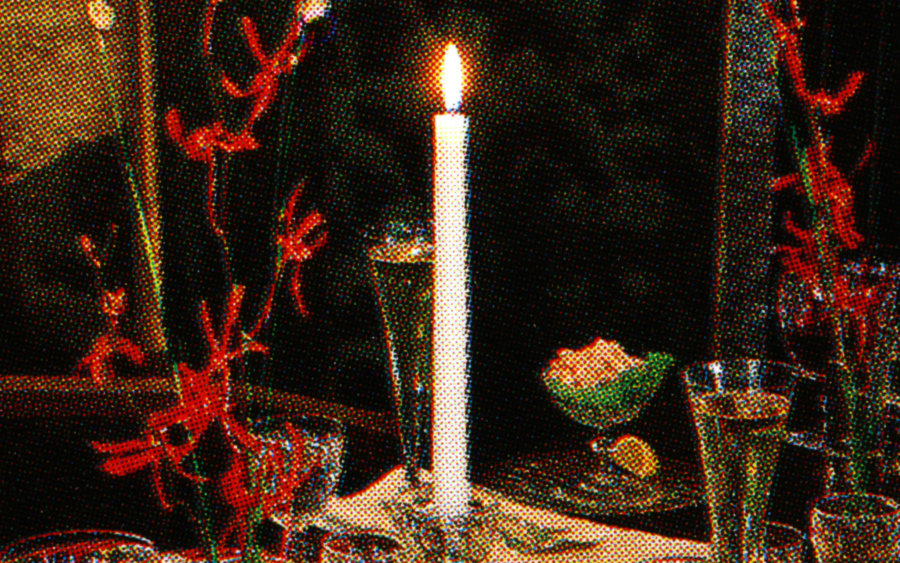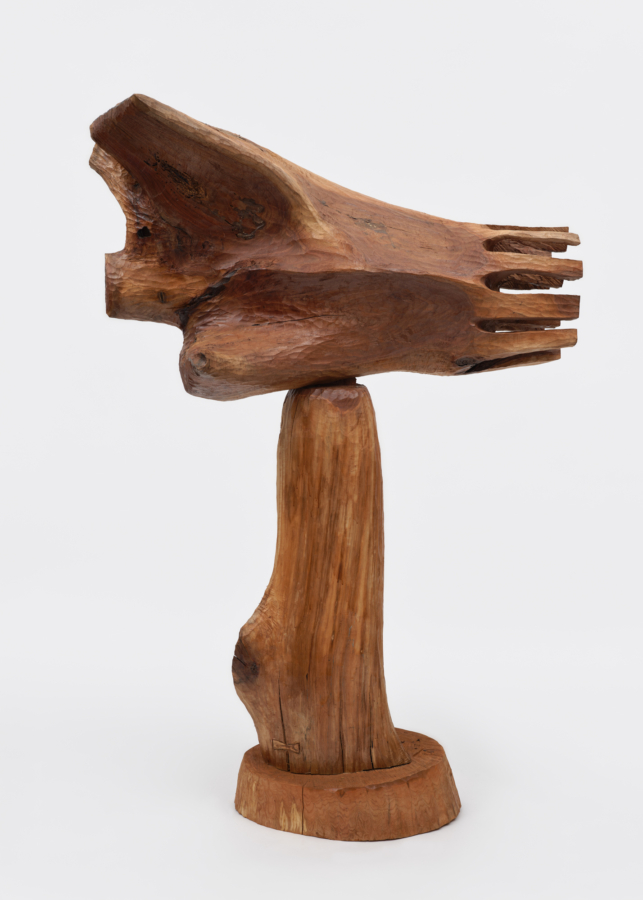2022
Consulting with Shadows, published by Karma, New York, 2022
Weeks after writing on Maja’s paintings for BLAU magazine, I went to Santa Fe for a trip. Having witnessed a series of unfamiliar sights—tumbleweeds tumbling in front of car headlights, shooting stars of the Lyrids meteor showering at their peak, and a silver moon gently waking me at midnight—I gained better eyes for nocturnal scenes and a fresh perspective on works by the New Mexico–based artist.
zooming curves rocks and nights, up, down, up-p-p, down-wn-n
My eyes shifted rapidly across the vast, open, high-altitude landscapes from shapes in various distances to the point that objects would often blend into a single, yet vivid, image.
At Ghost Ranch, with Georgia O’Keeffe’s portrayal of this land in mind, especially her Purple Hills Ghost Ranch – 2 (1934), I went for a riding tour. While I repeatedly looked up and down to keep balance on my horse, gradually, the close-up of the horse’s mane and back of its neck blurred with the broad mountain views in the distance, like multiple exposures on one negative.
Maja shared with me a similar story about how she missed and was later surprised by a rattlesnake during hiking one summer after she moved from the West Coast to New Mexico, almost five years ago.
I wonder whether differentiation between figurative and abstract truly exists in nature. Do they have such binaries?
A mountain is a profile, a form, an area of textured color, and a collection of its plant and rock habitants, thus, a representation of itself—all at once. Just like the rattlesnake against the landscape, with its skin patterns camouflaging the biogeographical environment.
In a rhythm of its own, Maja’s exhibition at Karma, Consulting with Shadows, was like a wonder trip and invited us to travel through ups and downs, fars and nears, bigs and smalls.
In the main space, large-scale paintings were presented at the front with a series of smaller oils on linen shown in a fully-fledged wall setting in the back. A few storefronts down, her works on paper shown there brought abundance and intimacy to the room.
I remember feeling myself bouncing between scales, depths, shades. I also felt as if I could hear visual echoes.
colors hugging others, like jar like torso like eye-shaped church
On a certain level, Maja’s artworks are indeed negatives in which multiple exposures occur. She makes in her frames recordings of vision, narration, and imagination.
The X-ray-like ribs in Dusk/Mother (2021) have been compressed into the linen along with images of tree branches, lavish shades of mottled dusk, impressions of fogginess, and memories of her mother’s hug.
Likewise, no matter how abstract or how figurative her work might seem, each composition contains something both telling and ambiguous to share with its viewers—
In Parents (2021), mountaintops overlap, forming fan-shaped eyes. A trunk-like vertical stroke slices through in the middle, as if poking these eyes.
Father (Consulting Shadows I) (2021) amasses seemingly disparate motifs altogether: a still body—lying in bloody burgundy surrounded by the protagonist’s arms; tears—falling down a man’s cheek; cone shapes—in the back, resembling an hourglass or drop of liquid; and again, almond-shaped cutouts are many pairs of eyes, looking out.
Eyes, Maja’s eyes. The artist has trained hers well—just like how her runner’s body was once trained—to be fully trusted yet still remain at a distance from what she sees. In doing so, personal emotions and collective histories emerge and supplement her vision.
The recurring eye-shaped forms in her work suggest deep looking, implying that sight alone is unreliable. Maja asks us to embrace the visual dialectic, to be witness and observer, to be skeptical, and to value things that are felt but not seen.
Paintings, for Maja, are apt storage for contradictions and untitled feelings.
She calls her colors “containers” in which the adjacent ones cuddle together to approach new meaning, whereas her art practice is “a personal church” because painting is a one-person religion that requires both somatic and spiritual exercises.
and a wound, turns into self, sucking up its whole hole
Maja masters her materials to express in their mechanic.
Her works are often profound and rich, when they are just thin oil paint washes; light and tender, when composed of dense strata of gouaches.
The watery fluidity in the former is in an intertextual discourse with the powderiness of the latter.
Just like the enigmatic human hearts.
An organ that is simultaneously somatic and spiritual. A heavy archive of all types of dialectics.
For Maja, a spider residing in heart (in Truth Carrier [2022]) kindly reminds us to not turn away from difficult truths, but to continuously expose ourselves to new sets of grammars of the elusive love language.
Referencing Louise Bourgeois, the spider is not some highlighted marks in an art history textbook, but a heartfelt allusion to this predecessor artist who shared a similar complex relationship with domesticity.
It is Maja’s portrait of her mother who brought her away from the war and suffered from PTSD but who did not protect her from the other harsh realities of life.
Gratitude, pity, irritation coexist deep within the artist’s heart.
It is also a portrait of painfulness at large.
Maja created and keeps creating depictions of her domestic relationships after having gone through struggles with insomnia and postpartum depression herself, as if she has to be a mother a bit longer to truly realize the interiority of motherhood.
She composes saddened odes to all those who have been hurt. She lets us know that pain is like a parasite:
It feasts from you, but you need to outgrow to even all the sacrifices.



